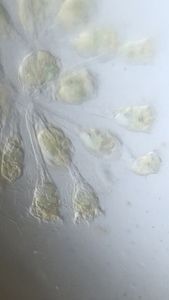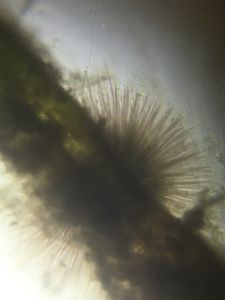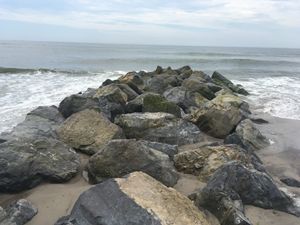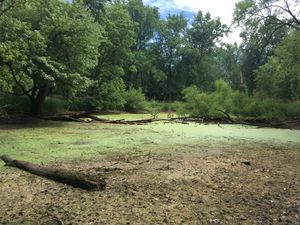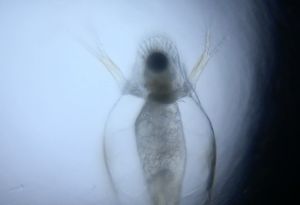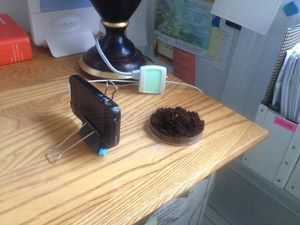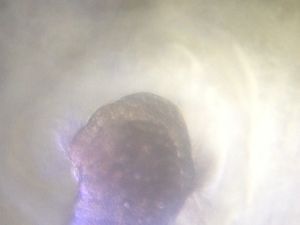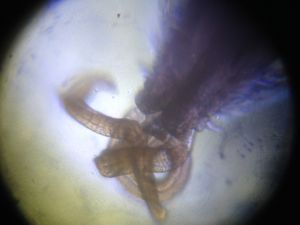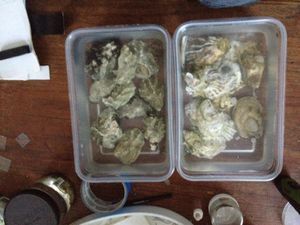How to Build a Plankton Net
 Jul 11, 2016 • 8:59 PM UTC
Jul 11, 2016 • 8:59 PM UTC Unknown Location
Unknown Location 140x Magnification
140x Magnification Plants
Plants
Matthew Rossi
I'm a novelist, essayist, and a writing consultant. I work in the writing centers at Columbia and Baruch University and explore research into the overlap of maker cultures and writing. My work with the Foldscope tends to focus on finding wild creatures in urban spaces and looking at how human works are shaped by the movements of the biosphere.
40posts
105comments
4locations
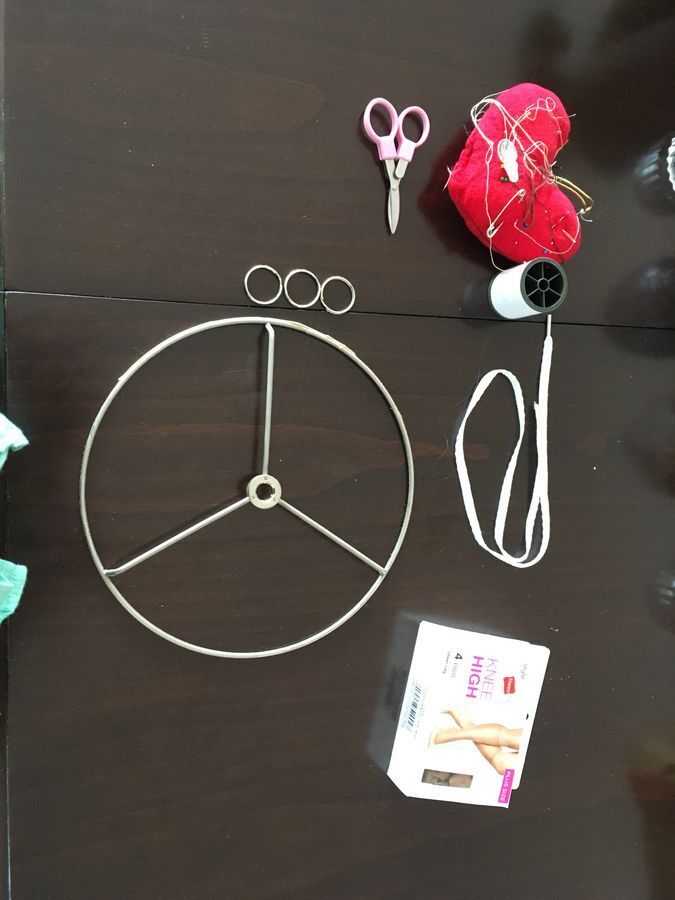
Although one of the best things about our explorations with the Foldscope is that you can pretty much find your subjects anywhere you look, occasionally it is helpful, when looking for specific groups of critters, to build a little bit of extra equipment to help you along the way. One of these that I have started to use all the time is a plankton net. A plankton net is a type of drag net that funnels water through a fine mesh sieve and pushes anything too large into a bottle at the far end. Professional ones look something like this:

You can buy them online for about $16, but personally, I like to DIY my scientific equipment. Since I recently had to replace some equipment and tinker a bit with my plankton net’s design, at Manu’s request, here is how to make a fairly effective and inexpensive plankton net using a large metal ring and a pair of panty hose.
A brief caveat before we begin: the beauty of this design is that it’s pretty flexible and hackable. I’m going to lay out the relatively fancy version of this net, but you should keep in mind that the design can and should be adapted to the materials you have on hand. You shouldn’t, when all is said and done, have to spend more than a few dollars on it. OK. Onto the build.
You will need the following things to make this plankton net.
A brief caveat before we begin: the beauty of this design is that it’s pretty flexible and hackable. I’m going to lay out the relatively fancy version of this net, but you should keep in mind that the design can and should be adapted to the materials you have on hand. You shouldn’t, when all is said and done, have to spend more than a few dollars on it. OK. Onto the build.
You will need the following things to make this plankton net.

A wide metal ring. This can be any kind of metal ring, but I have a preferred type. (More on that below.) Three small metal keyrings One nylon stocking Some kind of twine or rope (I’ll discuss types below). A bottle (also flexible on the types). Optional things include:
a variety of hanging irons a shoelace or some other kind of thick tying rope (zip ties work, too, but are less preferable) a much more fancy bottle So your first step is to get yourself a wide metal ring. This will be the main mouth of the funnel. You can use virtually anything to make this, and I’ve seen recommendations of anything from wire coat hangers to jewelry wire, but the problem with any of these is that they’re likely to snag on the fine mesh of the hose and create a run in the stockings. When wearing stockings, this is embarrassing; when using them to catch small plankton, it renders the stocking ineffective. For this reason my preference is for one of these.
a variety of hanging irons a shoelace or some other kind of thick tying rope (zip ties work, too, but are less preferable) a much more fancy bottle So your first step is to get yourself a wide metal ring. This will be the main mouth of the funnel. You can use virtually anything to make this, and I’ve seen recommendations of anything from wire coat hangers to jewelry wire, but the problem with any of these is that they’re likely to snag on the fine mesh of the hose and create a run in the stockings. When wearing stockings, this is embarrassing; when using them to catch small plankton, it renders the stocking ineffective. For this reason my preference is for one of these.
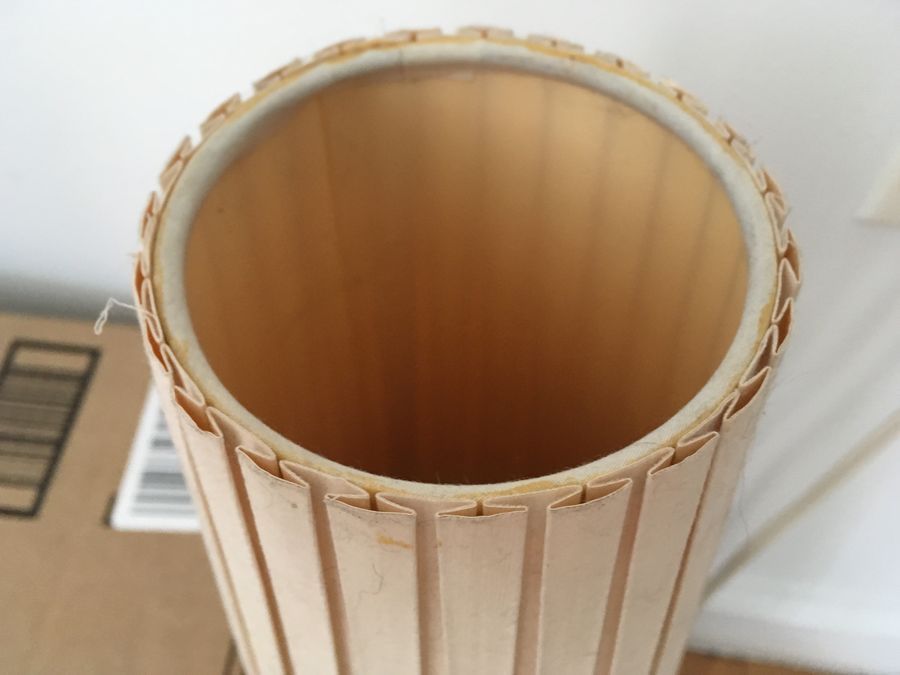
The wire frame out of an old lampshade makes a perfect metal ring for a plankton net for three reasons. Firstly, it’s sturdy, so it will stay open regardless of the current pulling on it. Secondly, and most importantly, it’s smooth, so it won’t catch the stocking and create a run. Thirdly, you can almost always get one of these for free. If you live in a sufficiently urban area, a casual walk down the street during trash day and moving season will reveal lamps of all shapes and sizes strewn all around as local college kids and moving couples toss out the lamps that are either broken or that they don’t want. You, yourself may also find you have a spare lampshade lying around somewhere that you can cut apart. Simply cut the top ring off of it (for a smaller lampshade, the bottom is better…we’re looking for about a nine inch diameter) and discard the rest.
We need to create a place for your tow ropes to connect to the ring, so first we’ll slip the three small key rings around the big ring. If your lampshade has three middle spokes like mine does, you might want to put the key rings onto that. If not, just position them at roughly 120º intervals from each other.
We need to create a place for your tow ropes to connect to the ring, so first we’ll slip the three small key rings around the big ring. If your lampshade has three middle spokes like mine does, you might want to put the key rings onto that. If not, just position them at roughly 120º intervals from each other.
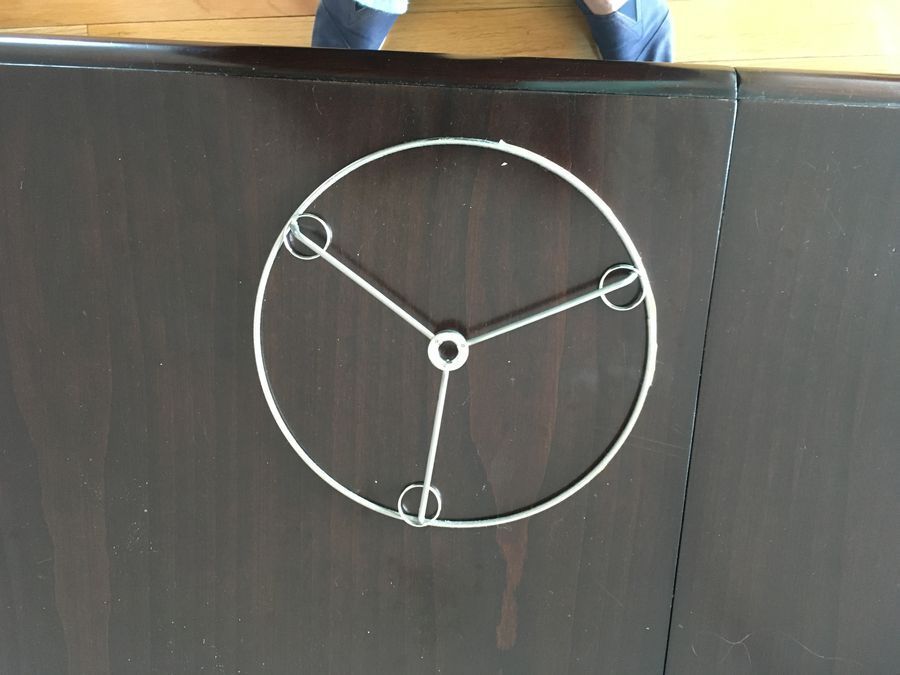
Now we need to tie them off to secure them in place. You do this so the rings don’t slip around when the net is in the water and create a tangle. I’ve used zip ties to accomplish this, but the plastic ties tend to snag the net and create runs. This time, I’m using a shoelace. (Note: this step is optional, since the net will work even if the rings slip around, but it is a pain to have to untangle your ropes so I recommend it.)

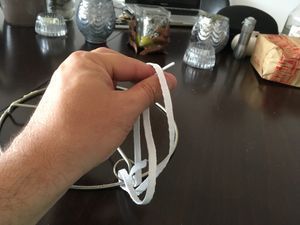
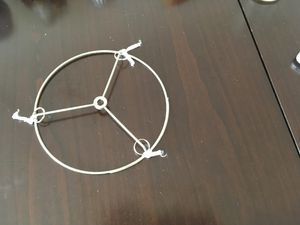
OK, so now that the rings are tied, it’s time to do some sewing, so get your pantyhose. My preferred style are plus sized with reinforced toes and linings. These tend to be strong and stretch well over the metal frame. Which is exactly what you’ll do next. First stretch the stocking over your arm to loosen the fibers up a bit, and then you want to kind of work it over the metal frame and anchor it in place with a few quick stitches.
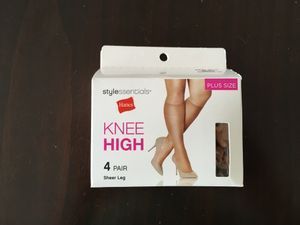
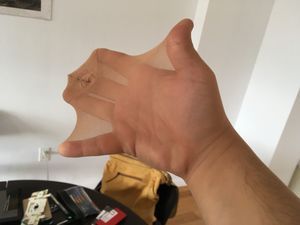
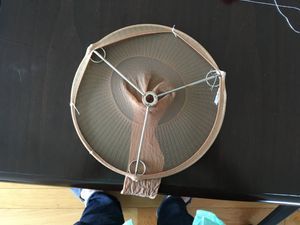

Once you have it anchored, you can finish the rest by evening out your stitches around the full circle of the frame.
You’ll be happy to know that was the hardest part of making this net. Now you cut off the toe and turn your attention to the rope.
Cut three lines of even rope and tie them around the key rings. I’m using carabiners to anchor them, but you could really just knot them if you wanted. You want to then anchor them at top to a longer bit of rope or twine using a large key ring.
You’ll be happy to know that was the hardest part of making this net. Now you cut off the toe and turn your attention to the rope.
Cut three lines of even rope and tie them around the key rings. I’m using carabiners to anchor them, but you could really just knot them if you wanted. You want to then anchor them at top to a longer bit of rope or twine using a large key ring.
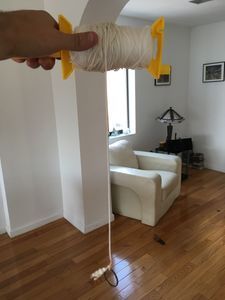
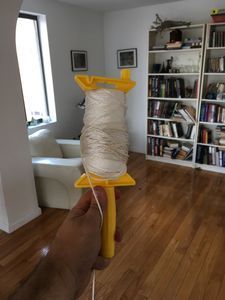
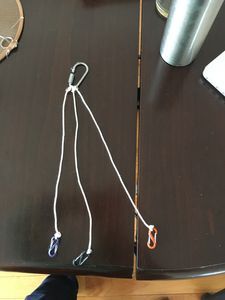
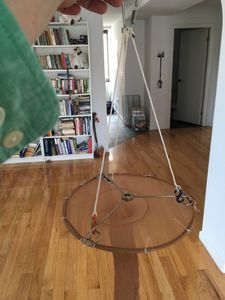
Finally, cut the top off of a juice bottle or a jar with a wide plastic top, and then sand it to make sure the sharp edges don’t snag the hose. I was lucky enough to get a fancy metal travel mug, so that’s what I’m using here.
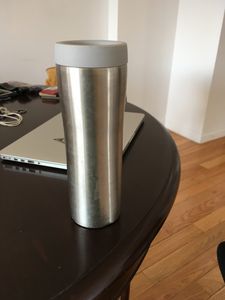
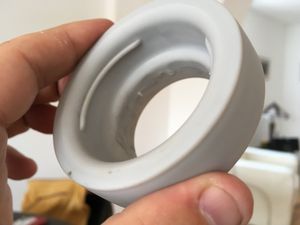
Now loop the toe end of the hose into the hole in the bottle, screw the bottle down, and voila, you have a net.
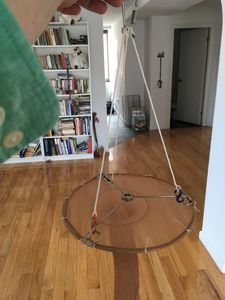
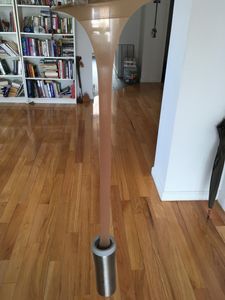
These are drag nets, which means you need a current running through them to really get anything from them. I use mine in the intertidal zones in NYC and will soon be using them in a river. If your only waters are still, you can do what’s called a plankton drag and use a boat to pull it behind you.
I’m still tinkering with the design. The next version might forego a lot of the hanging irons and use a strip of cloth tape around the mouth to allow me to punch grommets through the fabric, which I think would overall be more stable and less likely to have the sorts of tensions that tend to sheer my stockings when I’m catching plankton. Thoughts are always welcome.
I’m still tinkering with the design. The next version might forego a lot of the hanging irons and use a strip of cloth tape around the mouth to allow me to punch grommets through the fabric, which I think would overall be more stable and less likely to have the sorts of tensions that tend to sheer my stockings when I’m catching plankton. Thoughts are always welcome.
Sign in to commentNobody has commented yet... Share your thoughts with the author and start the discussion!

 0 Applause
0 Applause 0 Comments
0 Comments




